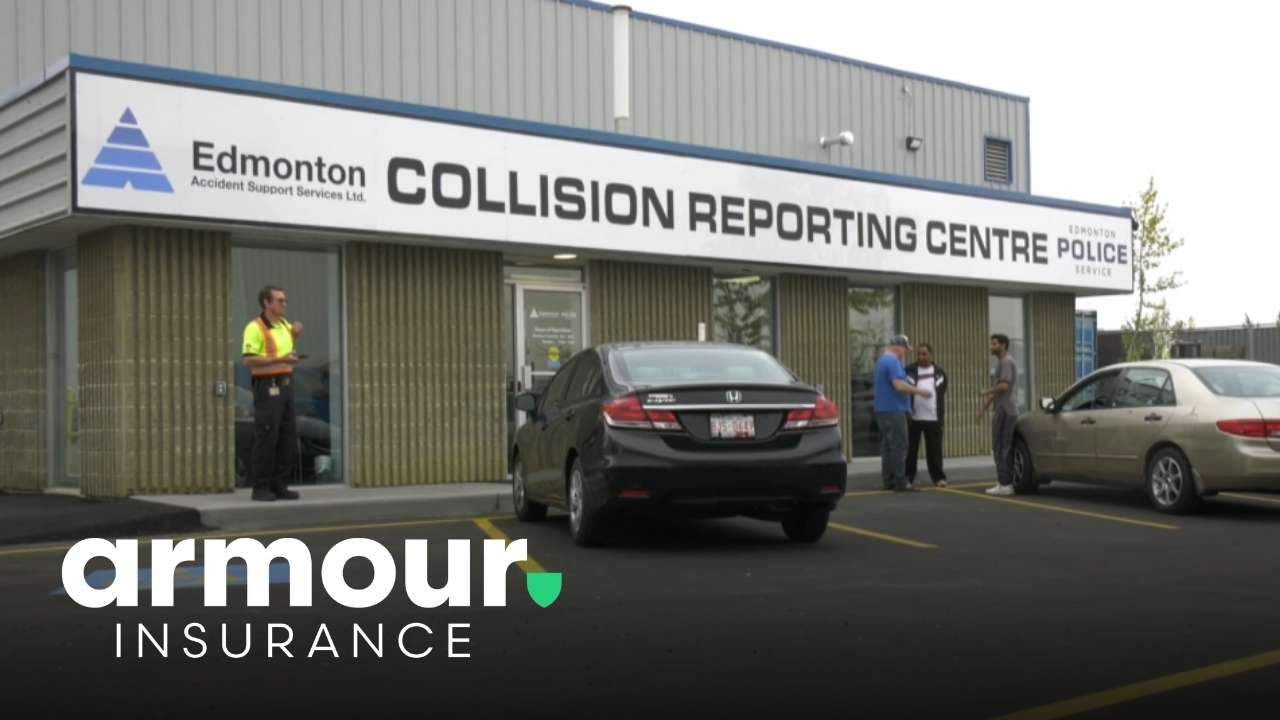With winter beginning to rear its ugly head in the province of Alberta, so to is it time to think about how you are going to get prepare your vehicle for winter. Outside of double checking your block heater cord, making sure you're using sub-zero rated washer fluid, and load testing your vehicles battery, you're probably going to need to do something with your vehicle's tires. If you're not 100% on what you're going to do this year, here is a few points to be your food for thought.
All Season vs. All Weather VS. Winter Tires
One of the most commonly asked questions this time of year is "Do I really need winter tires if I have all season or all weather tires?" The short answer is yes, you probably need winter tires if you plan on driving in Alberta. All season and all weather tires have a bit of a misnomer in the title.
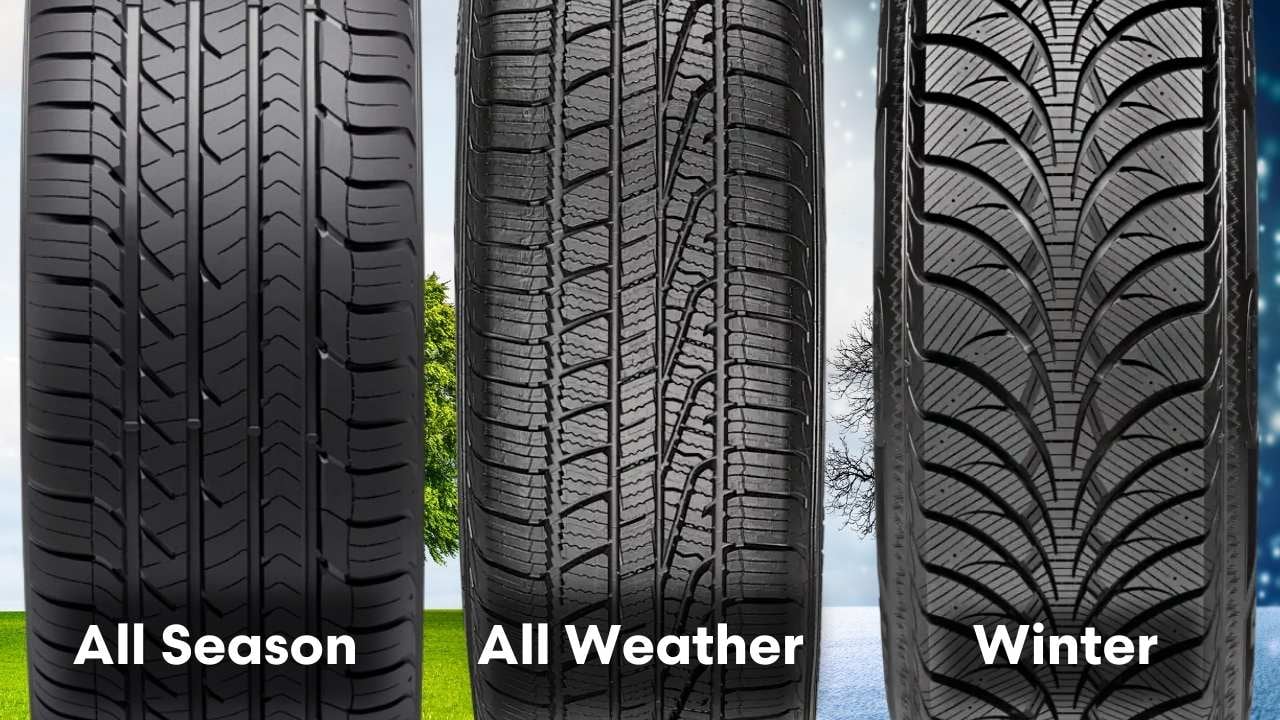
All Season Tires
All season tires are the type of tires that usually come with your vehicle if you buy it new from the dealership. All season tires are designed to handle well in warm dry or wet conditions, but become hard and lose their grip when they are exposed to temperatures below 4°C. For most that have experienced a winter in Alberta, they know that temperatures below 4°C are pretty much the norm from Halloween right up until Easter most years. In essence, all seasons are probably not sufficient for winter driving in Alberta.
All Weather Tires
All weather tires are a fairly new advent and have begun to grow in popularity. All weather tires are designed to remain pliable in mild summer and winter climates. All weather tires remain soft in the summer and in mild winter conditions, usually to a coldest temperature of -15°C. These types of tires of tires are reasonably good performers for year round drivers in Canada, however they do not corner in winter conditions as well as winter tires. In conditions below -15°C they become hard and begin to lose traction.
Winter Tires
Winter tires are certainly the best choice for driving in winter conditions. They provide a soft rubber compound that creates the greatest traction when driving in snow and ice through sub-zero temperatures. These tires allow for the greatest cornering and stopping abilities when winter conditions are unfavorable. These tires are not meant for summer conditions, driving them in temperatures above 4°C can cause premature wear.
When should you replace winter tires?
There are 3 main factors that go into when you should replace your winter tires.
1. The Age of the Tires
Depending on who you ask, the age at which a tire is no longer functional varies. Generally speaking, an accepted time frame is 5-10 years where a tire is no longer functional. That is not to say that tires that all tires under 5 years are usable. As tires age, the rubber becomes hard and starts to crack. Hard tires have less traction in nearly all situations.
You can tell how old your tires are by looking at the DOT number printed on the side of a tire.
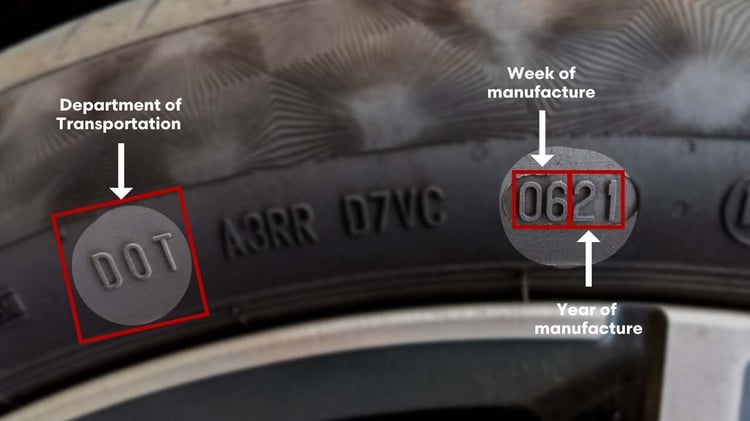
The DOT (Department of Transpiration) number can identify a 7 day window where that the tire was manufactured. The tire shown above was manufactured in the 6th week of 2021. If your tires have manufacture year that is older than 5 years, you may want to consider replacing your tires.
2. The Tread Left on the Tires
Regardless of how old your tires are, the tread is what determines how effective your tires are. The way that tire tread is measured is in inches (X/32). The easiest way to measure tread is with a tire tread depth gauge. They are only a few dollars and can be found in the automotive section of most major retailers.
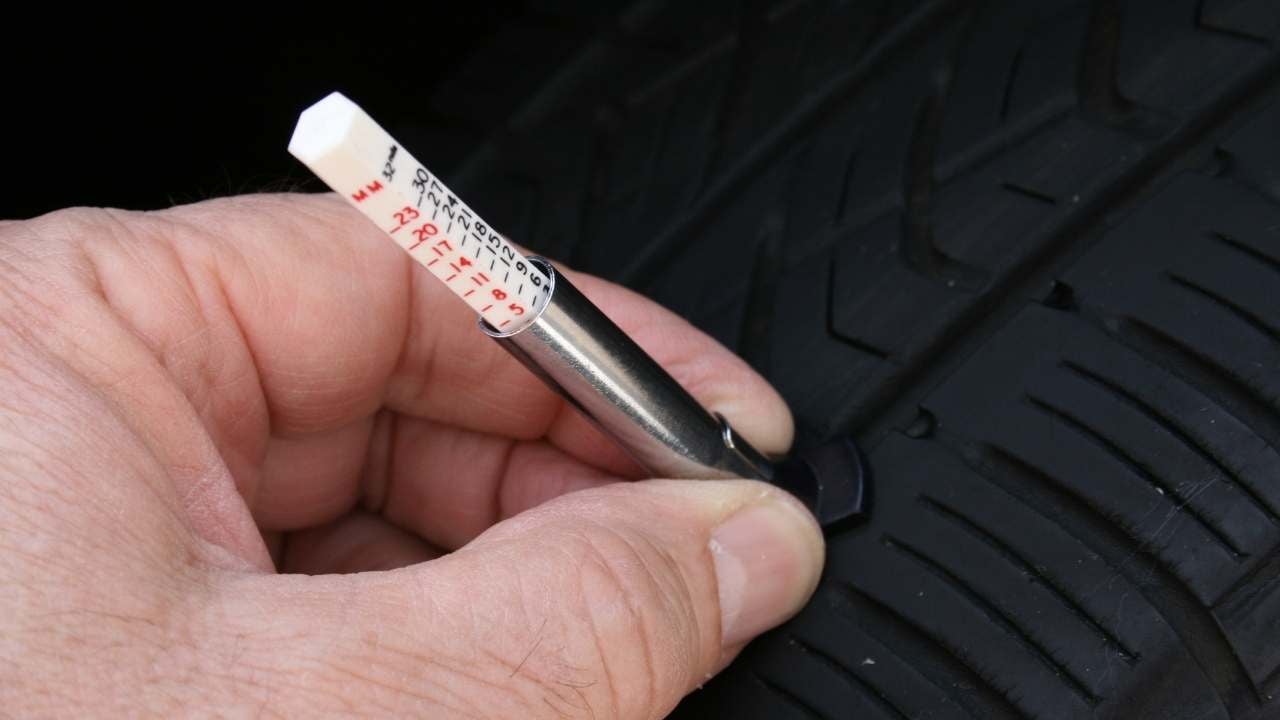
To use a depth gauge, just pull out the small pin out of the center of the tube until it shows the maximum tread rating and press it against the lowest point of the tires tread, just like is shown in the photo above. Now that you know how much tread you have left, you can make an accurate decision on what to do with your tires.
If your tire has between 13/32 and 6/32 of tread left, your tires a fine to continue driving on. If your tires have between 5/32 or 4/32 of tread left, you may want to consider replacing your tires soon or after this driving season. If you have 3/32 or less, you should strongly consider replacing your tires. If your tire has low tread, your stopping distance increases quite a bit. This makes these tires less safe to drive with.
3. The Wear on the Tires
This part of inspecting tires is not quite the same as checking the tread left on tires. The wear of your tires looks at how evenly your tread is wearing on your vehicle.
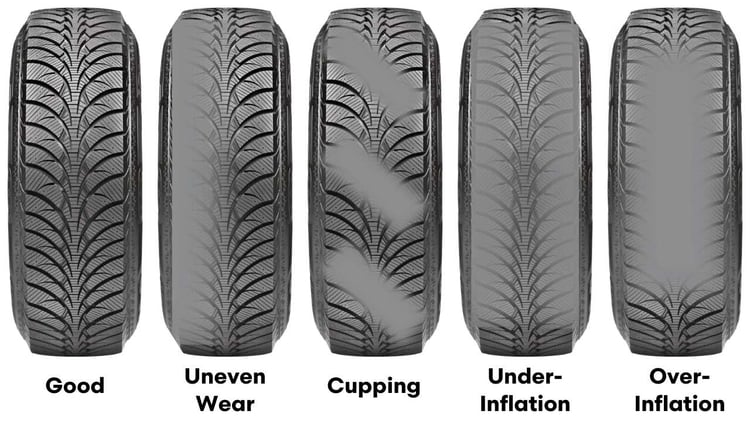
Using the slightly crude diagram above, you can see what kind of wear your tire has.
| Wear Type | Description |
| Good | A tire has a good wear pattern when the tire is has consistent wear on the face of the tire. The tread should be a consistent level across the tire. |
| Uneven Wear | If the tire has more tread on one half of the tire, there is likely a problem with one or more of your steering and suspension components. The tires should be replaced upon inspection and repair of the vehicle. The vehicle should also be aligned to ensure this issue does not occur again. |
| Cupping | If the tire has patches of uneven wear on the tire, there is likely a problem with the vehicle's suspension or the balance of the tire. The vehicle should be repaired, and the tire replaced. |
| Underinflation | If the tire has more tread in the center of the tire and less on the outer edges, your tire has likely been driven without proper inflation. Depending on the severity, your tire may need to be replaced or at very least inflated to the proper tire pressure. |
| Overinflation | If the outside edges of the tire have more tread than the center of the tire, your tire is probably overinflated. Depending on the severity, your tire may need to be replaced or at very least inflated to the proper tire pressure. |
With this information in hand, you can make an informed decision on if you should replace your winter tires.
Replacing Your Winter Tires FAQ
If you have made the decision to purchase and install new winter tires, here are a few things that might be good to note.
What are Tire Sizes?
Tire sizes are measured in a rather strange way. Let's use my 2014 Subaru Legacy as an example. My tire size is P 215/50/17. If you are looking for the correct tire size for your vehicle, it should be in your vehicle owner's manual or on a sticker in the driver side door.
| P 215/50/17 | This is what you'll give the tire shop when shopping around for new tires. |
| P |
The "P" in front of the number is the tire type. P stands for passenger tire which is acceptable for use in cars, SUV's, or vans. Other ratings include LT (Light Truck) which is acceptable for heavier duty loads. SUV's that are towing or for trucks. |
| 215 | The "215" is used to measure the width of the tire. In my case, the 215 means that the tire is 215mm wide (from wall to wall). |
| 50 | The "50" is used to measure the profile of the tire. The profile is from the edge of the rim to the outer point of the tire tread. The profile is measured by percentage of the width of the tire. In this case the 50 means 50% of 215mm. That makes the profile around 108mm. |
| 17 | The "17" is used to measure the diameter of your vehicles rim. This indicates my vehicle has 17 inch wheels. |
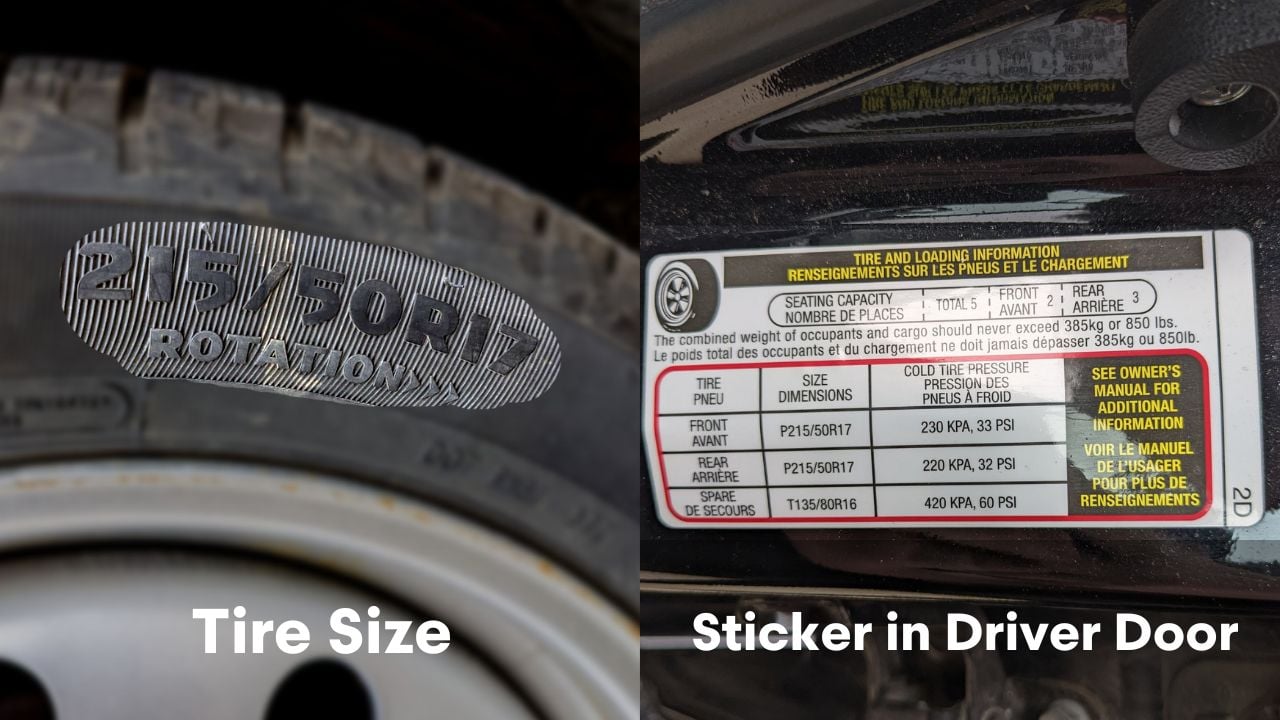
Despite sizing being a little complicated to figure out, the size listed on the inside of the driver's door should be sufficient for getting an estimate on new winter tires.
What if I Have Low Profile Tires?
Low profile tires have shorter side walls and larger wheels. They are quite popular on sporty or higher end vehicles. Unfortunately for the owners of these kinds of wheels, replacement tires can be quite expensive and have limited options. Some low profile tires do not have any winter tires available in your tire size. You will likely need to make do with performance rated tires.
Low profile tires usually have a rim size over 18 inches in diameter. In some cases, it is possible to purchase a smaller diameter steel wheel to reduce the cost and increase the availability of winter tires for your vehicle. Talk to a tire professional before changing tire sizes.
Do I Need Winter Tires for an All Wheel Drive Vehicle?
It is recommended that you have winter tires even if you have an all wheel drive (AWD) vehicle. While and AWD can help give you maintain control in snowy conditions, the tires are what keep your vehicle gripped to the road. A FWD vehicle with winter tires has better cornering, acceleration, and braking than an AWD with summer tires when in winter conditions.
What is a Wheel Lock?
Wheel locks are a special kind of lug nut that requires a special socket to be removed. They are meant to be an anti theft device. The wheel lock key is usually kept in your vehicle's emergency kit, with the spare tire, or in the glove compartment.
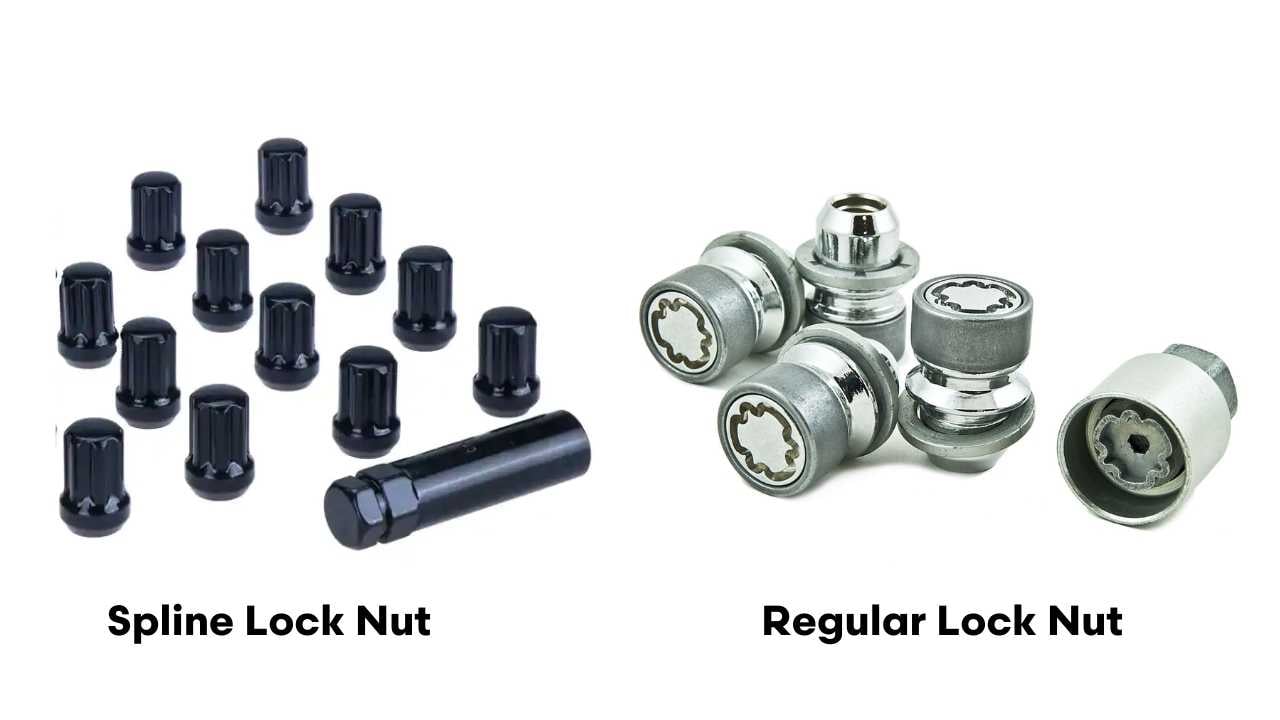
The spline lock nuts are used on all of the vehicles lug nuts and have a round socket like key that removes them. Many after market wheels use these lugs as a space saving measure. The key can usually be purchased from a custom wheel or tire shop.
Regular lock nuts with have a special socket to remove the one lock nut from each wheel. The wheel lock key is usually not purchasable aftermarket. In some cases, the dealership will have a wheel key that can be purchased. In many cases, if the wheel key is lost, the nut on the vehicle will probably need to be destroyed to be removed from the vehicle. PSA: don't lose your wheel lock key.
Should I buy a second set of wheels for my winter tires?
A lot of folks hate taking their car in to the shop 2 times a year and having their tires swapped over. They wonder if buying a cheap second set of wheels would be worth it. After doing some quick digging, a set of 4 steel wheels without TPMS sensors cost between $200-$400. The cost of a seasonal tire changeover varied wildly in our area from $110-$280 for each instance, making it $220-$560 for the year.
Under these conditions, it is probably worth buying a second set of wheels for your winter tires:
- You don't mind the look of steel wheels on your vehicle
- You have the time and ability to change the wheels twice a year yourself
- Your vehicle does not have TPMS sensors in the wheels
- Steel wheels will fit your vehicle appropriately
What are Directional Tires?
Directional tires have tread that point in a specific direction. Directional tires can provide superior handling in sub-par conditions. It is important to note that directional tire cannot be installed on either side of the vehicle once the tire is on the rim. If you are changing your wheels at home, make sure the direction of your tire is pointing down the road.
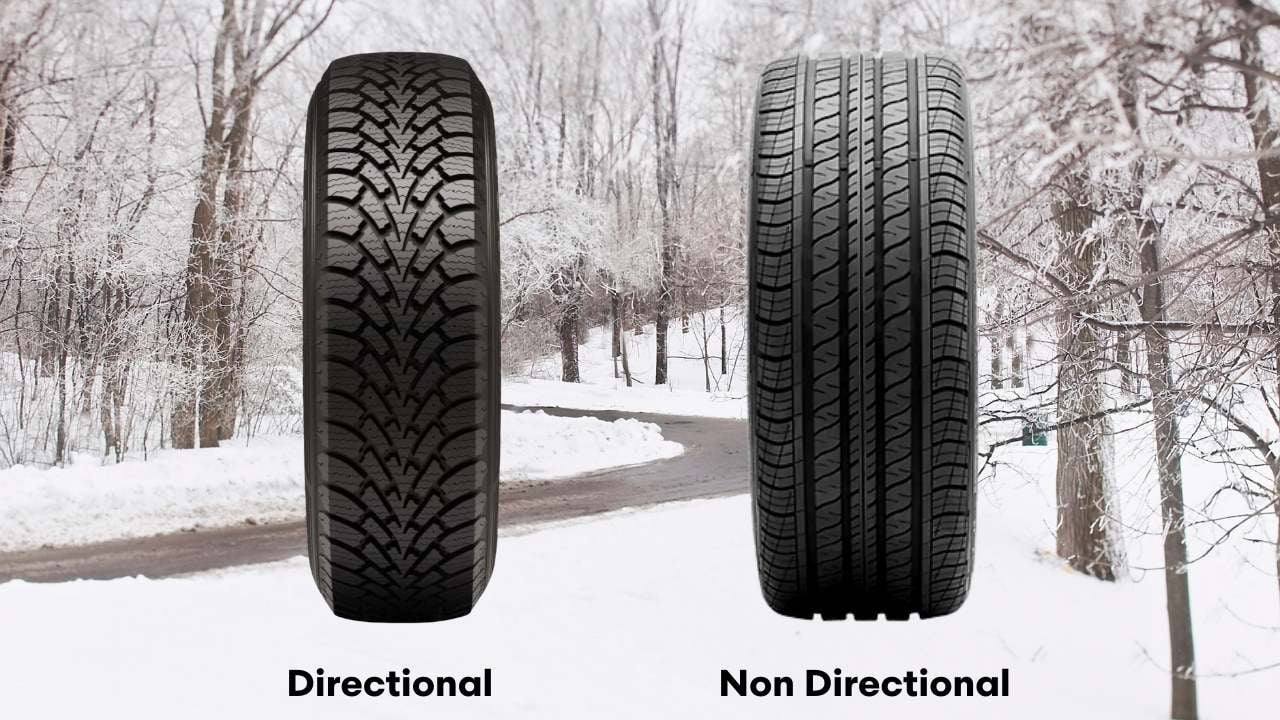
Why do I Need My Tires Balanced?
When manufacturing tires, they are not made perfectly even. They will have a heavy spot somewhere in the rubber. A tire that is not balanced or not balanced properly will shake when it is driven down the road. In order to stop this shake, weights are attached to the vehicles rims to balance them.
Conclusion
All in all, Alberta does not have any requirement to have winter tires or tire chains. There are no insurance discounts for having winter tires. That being said, winter tires provide the best traction in winter conditions. Having winter tires installed on your vehicle can help prevent accidents and give you confidence behind the wheel. Make sure your tires are in good condition before this winter season.




